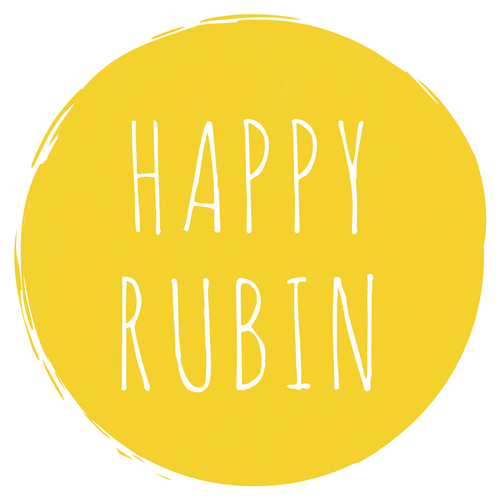![How To Deal With Sensory Overload [9 Tips For Overstimulation]](https://happyrubin.com/wp-content/uploads/2019/12/ik-ben-overprikkeld-150x150.jpg)
Using The Utilization Technique To Deal With Resistance & More

What is the utilization technique? And dealing with resistance… how do you do that? In this article you will find all the tips & tools to deal with resistance and to change it. There are many ways to deal with resistance from groups or your client. Read on to learn them. In the second half of this article we will zoom in especially on the utilization technique…
Contents of this page:
Dealing with resistance from the client or your group: The first 16 effective tips
How can you deal with resistance? Use the tips and models below:
- Name what you perceive: I see, hear, feel that you are doing x. Follow the further step-by-step plan from question set 4 of the article about asking questions .
- Diverting the resistance. With this technique, the assumption is that there will always be resistance and that you should always be able to put it somewhere . People only feel good when they have at least resisted anything for a while. You then simply draw this inevitable resistance to an unimportant detail. A sales example: a car salesman tells customers about extra insurance. The customers resist the insurance, but luckily the intention was to sell the car.
- Making the problem and the associated pain worse, for example with submodalities. For a client who wants to take better care of her teeth, you can paint the image of black teeth, red gums, etc.
- Use reverse psychology and provocative therapy to counteract resistance.
- Use the experiments frame. ‘Our intention is not yet to solve it. I warn you, it can be resolved spontaneously during the exercise. You run that risk: imagine that you are suddenly successful … But we are going to experiment purely. ‘
- Check ecology again. “Do you want it?”
- The positive intention (secondary gain) can keep the problem in place. So recognize the underlying need of the client. Use a positive intention reframing for this : “How can you maintain the benefit of [unusable situation] while letting go of it and exchanging it for something else that satisfies this positive intention?”
- What do you really want?
- First upchuncken and then downchuncken for a new way to meet the need. This is lateral chunking.
- Change your behavior if something doesn’t work. Try something different. Do this with resistant clients: it’s your responsibility to tweak so you’re testing something else. It is not the client’s fault. The resistance lies with you and not with the client. Be more flexible. In this way you can learn everything. Plan a plan b plan cdeklnlp, until it works. Tell the client this too: if it doesn’t work, we’ll try something else. If we keep doing something else, something will work.
- Are you visualizing with the client ? Then immediately use a presupposition once you have started. For example: “Is it light or dark?”
- Someone says, “I don’t know.” Then use a presupposition like this: “What are you pretending you don’t know about?”
- Use the what if frame.
- Unfortunately, the fear of being hurt may be greater than the decision to intervene. Don’t be afraid to tell the truth and model the customer’s world. ‘Don’t bullshit the client and yourself.’
- Don’t distort emotions by seeing them as resistance. Emotions are completely normal. If sadness or anger arises in your client or in someone in your group, do not be impressed by it, but accept it with an attitude that says: this is also part of the deal, this may also be there and this is normal. In fact, if this happens, it is a sign that you have created a safe environment in your coaching or training in which participants dare to express their emotions.
- The best technique for dealing with resistance is utilization . This is a very simple, but very funny and ‘smart’ technique in all kinds of coaching situations. That is why we are going to devote the rest of this article to this technique.
Are you in front of a group? 6 tips for dealing with resistance in your training
- Appreciate the resistance and the positive intention! With this you also follow the other. Say, ‘I’m glad you mentioned this and I’m glad you’re here! Maintain this inquiring stance. At the same time I would like to invite you to test something new. Just as a test. ‘ Or, ‘Keep what you’ve learned before as an option, but if you only keep doing what you’ve always done during this training, you’ll get what you’ve always gotten. Then you will not get the richness of {this method}. We want to give experiences about the true depth of {this method}. ‘
- If someone asks a strange question or is gagging, find out the intention of this person. Chunk up: “What would you like to achieve with this behavior?” “Then I enjoy myself.” Join this student by following him / her in this. Then you can find another way for that intention: ‘How can you enjoy yourself and follow my class? Listen to me carefully, I am the teacher. ‘
- Realize that it is normal to resist. Expect it and so welcome the resistance. Your state of mind does not change and remains warm and unaffected. Some people have particular difficulty hearing anything that goes against the model of the world. You can use the above tools to deal with this. But how do you expect it? The answer is utilization. Use utilization, which is discussed in detail in the next section. The bottom line is that you just expect all resistance as if it were the most normal thing in the world and as if it were part of your planning. You follow the person (or people) who resist and show understanding. Then lead you back to the rest of your lesson plan.
- Respond with long silences and rest – or fluently, smoothly, and warmly to someone deliberately trying to disrupt things: “ I appreciate you having some things to say, and I’m training here, so join me in the pause.’
- If someone in your group shouts something ‘nonsense’, accept it and don’t get upset. You may even ask, “How interesting, tell me more.”
- Always follow the other before you lead. This means that you always first fully acknowledge the other in his reasoning. Suppose someone in the group says, ‘Why are you telling a metaphor now? What good is a story for me? ‘ Then respond with: ‘How good! Someone who wants to get to the point. That can only be encouraged. Thanks for being here! ‘ Then ask if the other person would still like to start the experiment.
If you give a goals workshop and a participant does not see the point in writing down his goals, you will also understand: ‘Yes of course! They suddenly tell you to write down your goals, but you are not waiting for that at all. You have known them for yourself for a long time. I hear you.’
If a participant indicates that he has trouble getting to his feelings, you say: ‘I can imagine that you find it difficult to get to your feelings. I hear you have challenges with that. I hear you.’ And then lead to a “what if” box: “And what if you just pretended you could?” - Make sure that you indicate ‘your rules of the game ‘, or framework , at the beginning of your training . One of those rules could be: “Challenge me, but also be open until you evaluate at the end what you keep and what you choose not to keep.” The great thing about this is that you can always go back to this framework. So don’t just set the framework, but also defend it.
- If someone keeps asking questions that might make you run out, point to the box: “Great Questions! That is very good! I would also like to ask you to stay focused on what the group needs and ask your questions in the question paper. ‘ Or, “And I’ll answer them during the intermission because of the frame.”
- Use subliminal priming to make your lesson topics sound familiar, so that there is less resistance when you handle the topic officially / consciously.
- Use of ‘martial arts’: follow & lead and utilization (which we will discuss in detail later).
– Does someone say something that interrupts your training part, such as: “What does this apply to?” Then receive it as if it were the most normal thing in the world: “Yes, of course, I’ll get to it in a minute.”
– If someone says a little too enthusiastically disrupting your training, say, “That was a brilliant demonstration of strength! Can you also demonstrate that you can be careful? ‘
– “I liked another seminar better!” If necessary, bring the heckler onstage so he can show it. What specifically did you think was superior to the other seminar? Maybe I can learn from you?
– Someone who’s skeptical: ‘It’s good to be skeptical. So thank you! Thank you for being here! I like when people are skeptical, I am too! May I invite you to keep your skepticism safe by your side? Keep it! And test the exercise of this workshop. ‘
You’re giving a martial arts presentation and a heckler says, “Does ballet come in handy?” Then you use that: ‘Yes, that is also useful. Then you can escape with a ballerina move! ‘
– You cannot discuss some of the hecklers’ topics during your lesson, because the group wants to continue and learn something useful. An example of what you don’t cover in class is hecklers shouting in class that they want their money back. - Someone says, “I already know that!” Then that makes perfect sense for you. All information can be found on the internet. It’s a big mistake to think, “I already know.” Rather think, “Am I already doing that?” And even better: do it again! What would be the better question, “Do I already know this?” Or, ” Do I know?”
“I already know that. That’s an open door …” Open doors are indeed less exciting and less original. As a result, they have a bad image. You look through it and you see what’s on the other side. But … you know that is where the greatest secret lies. The secret that “I already know” screamers don’t know: You enter theme parks, swimming pools and cruise ships all through doors. Just glimpsing it through the doorway isn’t the same as actually screaming your lungs out on a rollercoaster or sitting poolside with a smoothie. That is a completely different story than ‘I already know’. Few people actually walk through the (open) doors. As logical as it sounds, it is revolutionary when you actually walk through it.
– Jelle Hermus (paraphrase)
To know and not to do is not to know.
– Stephen CoveyIf you know better, do better. Knowing better, or already knowing something, is worth nothing. Just reading, hearing, or knowing something and forming an opinion about it will not have any positive effect on your life.
– Michael Pilarczyk

Utilization – The solution against resistance and disruptions
Let’s go deeper into the technique ‘ utilization ‘ below. This is a model for dealing with resistance.
There is an NLP technique that not only makes others see you as more humorous , but also as someone with social intelligence and charisma . With this technique, people see you as an awake and pleasant person.
And best of all? Thanks to this technique you immediately get a click with the other person, because with this technique you ‘ adopt ‘ something of the perception of the other person .
Is it interesting for you to learn this technique? Then I’m going to explain it for you now.
The technique is called utilization . This is a very simple, but very funny and ‘smart’ technique in all kinds of social situations, but also in coaching situations and even in situations where you have to deal with resistance .
How do you apply utilization?
Utilization is the art of responding in the here and now to what is happening to another person. When you do this, others will start to see you as an awake and considerate person.
Utilization can be applied very simply by copying the words of the other person, but not just without reason because we ‘have learned that we have to copy the words of the other person’ . You already learned that in cheap sales training.
You use the other person’s word for practical use or for the progress of the conversation.
- For example to ask a follow-up question in a conversation: “I study history .” “What is the history of this piece of jewelry?”
- For example to make a joke when you are meeting someone: “I operate Boeing 767s and 777s.” ‘ Ah, fascinating! ‘
- For example, to give the other person a compliment: “Today it seems the sun!” “That’s right, it shines for you!”
- For example, to encourage someone: “I look like a tiger trapped in its cage .” “Can you dig a hole to get out on the other side of the cage wall ? You are now a tiger out of its cage .”
- People try to find their seat where they sat before. “Sometimes finding your place in the world can be simple, can’t it?”
- “I study philosophy , but there are no jobs in philosophy.” “So then you philosophize about the fact that you don’t have a job.”
- “Would you pay 660,000 euros for that house?” “Not in 660,000 years.”
- There is a cough . “This time we will really make progress! This time we are going to let go of all that inner coughing . ”
- During a coaching session you hear a door closing somewhere . “And the door to that unwanted habit is firmly locked.” “We just closed the door on that subject.”
- When knocking on the door: “That self-confidence in you knocks and wants to go in.”
- A siren sounds from outside: “Many people are rushing , but you are taking all the time”.
And the sound can slowly disappear… ”(sirens are disappearing). - A teacher asks a question in the group: “We do it according to the popcorn method , so in any order.” “I pop first.”
- “I can determine things well .” “By the way, let’s decide to walk that way.”
Utilization can also simply have a practical use: why come up with something new when there is always an example available? Teacher: “Well, we have finished the demonstration, you can sit down.” Student: Oh wait, let me do this language technique on you one more time, I just got the hang of it. Teacher: Okay, let’s do that. Let’s think … apply the language technique to the following sentence: I think there are dominance issues between the two of us.
How do you arrive at these hunches for utilization?
Consider the following: everything is an example of something – everything is an example of something . Whatever happens, use it! So use whatever happens in the here and now.
Do not try to search your memory for advice and secondhand wisdom that you already knew , because they almost never have to do with the experience of the other person in the here and now.
Things in the here and now are often unexpected things, of course, and that’s what makes this skill so valuable to have. You could also define utilization as follows: ‘The art of not being surprised about anything.’ Because you use everything as an example to make your point anyway.
Everything is an example of something

Whatever happens, use it! So use whatever happens in the here and now. Of course, these are often unexpected things, which is what makes this skill so valuable to have. You could also define utilization as follows: ‘The art of not being surprised about anything.’
If you want to make a point, give examples, or make a joke … just pick up something that happened before or what someone had said before. Use that as a powerful tool instead of coming up with something completely new yourself.
Utilization: Leading by following
There is no resistance, only incompetent therapists. There is no resistance if you ‘utilize’ all reactions. For example:
- “Left or right?” The client is a bit bothered and answers: “Purple” “Indeed, that’s right. Purple (in the same tonality). We take this meaningful message and {connect to the desired result}. ”
For utilization you do the same as for ‘follow and lead’ and you now also include unexpected events, such as resistance or unexpected disruptions, in your pacing & leading. Moreover, in some cases you add your own cleverness. You possibly use the natural properties, reactions or other components of what happens or is said and you build on that to lead to a desired situation. Utilization therefore requires just a little more thinking and sharpness and it is therefore just a bit more ingenious than simply reflecting back what the client tells you.
More examples:
- During a visualization, the client mentions something unexpected. “Of course you see x. And notice what meaningful expression he has on his face. ”
- The client suddenly talks about an imaginary person. You accept the reality of the client and build on it with a simple question such as, “And what does he say?” “And how old is he?”
- For example, “How are you feeling?” “Tense.” “I wonder what that tension wants to teach you about NLP.”
- As your hand comes closer to your face, your eyes will refocus.
- A client who wants more mindfulness mentions at one point: “I actually saw immediately that everyone was calmer.” Then you can say: “That’s very good, because a good leader sees things before they happen, so that they can solve the problem more easily. ” By saying that, you help the client to realize that she’s actually already very alert and focused when she wants to.
- Every move you make will make you even more… For example, keep you in that chair.
- During a visualization: “You see a horse somewhere in the image. Where is the horse in relation to the complete picture? ” “The horse is sleeping.” “Where is the horse sleeping?” The coach thus recognizes the client’s experience. He adjusts his question instead of repeating his question literally.
- In the middle of a trance, the client’s eyes open: ‘Very well, and your eyes close again’ (also accompany this by ‘pushing’ the eyes with your hands).
- Just always say “Very good …” in everything the client does. Everything the other does, you see as the most normal thing in the world and as if you even expected it. Even if the client does nothing and just stays put …
- Also say “Very good …” for any change you calibrate , such as a sigh of integration …
Utilization in combination with reframing

A nice combination of utilization and reframing (rethinking) is creating a context in which the natural reactions of the clients are actually good. And lead them where they want to go. The great thing about utilization is that the client often does not realize that what she says is actually the solution. You just need to notice that information and use it in a smart, subtle way.
- “I believe I keep doubting myself.” “You say you believe you keep doubting. It is good to believe, as long as you still believe that you will achieve your goal, that will happen. ”
- “I can’t because I’m a control freak.” “The secret is, Debbie, you’re a control freak so you have control over your imagination (imagine a blue parakeet sitting on my hand)”.
- Example of a compulsive failure: “Fail at task x (failure at x is actually good!).” The client does x and also fails. He’s layered in failure in this behavior, which he did so very well full of things.
- A client says, “I am not convinced.” “It is true that you are not convinced, not yet, because you have not yet asked the question that makes you completely convinced.”
If you stumble, make it part of the dance.
– American saying
Utilization as a cure for disturbing noises
Another form of utilization: utilize sounds in the environment and use them as a metaphor. For example, do this for disturbing noises:
- Someone is sneezing. “The sound of a sneeze goes through you, leaving you with even more relaxation.”
- And there are disturbing noises, even on the beach (that’s where the visualization took place).
- And that loud door you just heard will allow you to go even deeper into a trance.
- All the sounds around you help you to go deeper into a trance.
- There is a cough. “This time we will really make progress! This time we’re going to let go of all that inner coughing and genius. ” Or, “What must be said?”
- During a coaching session you hear a door closing somewhere. “And the door to that nasty habit is firmly locked.” “While that door closes in the background, you feel that you go even deeper into a trance.” “We just closed the door on that subject.”
- When knocking: “That property knocks and wants to enter.” “There was a knock on the door on my experience …”
- A siren sounds from outside: “Many people are rushing, but you are taking all the time.”
And the sound can slowly disappear… ”(sirens are disappearing). - And even while all those other sounds allow you to learn what is not important and what is …
- And while that car passes by and takes you even deeper …
- And while you focus your attention from that car back to yourself …
- A toastmaster banged his head with a loud bang before the speech. “I wanted to start with a bang”
- {The disturbing noise} agrees. This is important.
- {The phone suddenly rings}. God is calling!
- {The phone suddenly rings}. That rings a bell.
- {The phone suddenly rings}. The phone agrees.
- When you give a presentation: you agree with the audience that for every interruption, person who is late or telephone that rings, a big round of applause will be given. Or give an unannounced applause for any major disruption.
“That’s all part of it.”
Utilization as a solution to resistance
Utilization can be particularly useful when the client is resisting. Acceptance comes first with resistance: “I accept you as you are.” You use that acceptance by means of utilization to lead the client back to the result.
- For resistance where the client does not go along with the exercise but instead stiffens: “And you are aware that you know how to stiffen your body, and you can feel it completely, wondering what is next what you will feel. .
- Don’t go into a trance, don’t fall asleep, don’t do anything I say. Don’t accept these suggestions as you sit here listening to the sounds of my voice.
- If the client keeps his eyes open: “That’s right, you are sitting here and your eyes are open and you think it is not working. And you REALLY believe it doesn’t work, and that’s okay, and I’m glad because the more you think it doesn’t work, the more the subconscious gets the chance. Exactly. Keep your eyes wide open. Be completely alert. Everything you do ensures that you are present. ” The client resists you right in a trance because he doesn’t expect it. The pattern has been broken and he is checking inside what is going on in all kinds of ways.
- If the client says, “I am not ready,” you are not going to find out why that is, but rather ask how that feeling was created. You can then interrupt that and lead you back to what you want.
- Is the other saying something unexpected, out of resistance? Then immediately say “That’s right” as if you expected it, without being affected by it, and reframe / utilize it further to your desired outcome.
Utilization for trance: anything can be used to get into a trance …

Also use utilization to put the client into a trance. When you notice that he is about to do something, tell him to do it. For example blinking or coughing. Pay close attention to things and tell them before they happen! Then you can predict them and tell them to do it. This will give you extra momentum for your suggestions to follow.
When you work with ‘what is’, everyone goes into hypnosis …
- (Client coughs) ” Very well, coughing means that you relax more and more and that you are ready to go into a trance …”
- (The clock starts to strike five times) ” And with each stroke you go deeper and deeper into trance … 1, 2, …”
Utilization as agreement and respect for the world model of the other
Always accept the reality of the person in front of you and then act on it. When you go along with the reality of a schizophrenic, it is no longer schizophrenic. When someone thinks they are a teacher or a leader, you can show that you accept that position, after which you can lead to your desired situation, for example by means of a reframing.
In the ‘agreement framework’ you make use of the answer by first respecting it and then simply re-introducing the desired topic, in a slightly different way. “I don’t want to eat Chinese.” “I agree with you and I respect that. We must indeed try something new, shall we go to the new Chinese in town? ”
Utilization can also be used in normal conversations to connect additionally with the other person:
- A teacher asks a question in the group: “We do it according to the popcorn method, so in random order.” “I pop first.”
- “I study history.” “What is the history of this piece of jewelry?”
- Utilization can already be in very simple things: “Today the sun is shining!” “That’s right, it shines for you!”
- “Lord …” “Miss …”
- Utilization can be used to prevent unnecessary input from other people. If you ask for suggestions and get two suggestions, see if you can combine them both: “Can anyone name a profession?” “A cleaner.” ‘A caterer’: a cleaner of a caterer!
- Someone says he’s ‘speeding away’. “Spacing away creates space … for new possibilities … to discover and integrate new things …”
For more examples, see the rebound reframing in this article.
Utilization can be used to save yourself from any situation
- “She’s full, isn’t she?” “Yes, I mean no. She’s full of lightness.”
- “I am depressed and I want to do something about it.” “Beautiful.” “That’s not pretty at all!” “That’s right – it’s nice that you know it’s not pretty.”
Utilization is also: applying things immediately!
This is used in shows like ‘De Lama’s’ / ‘Whose line is it anyway’:
- If a player is instructed to process confusion in a scene prior to a scene, he will immediately say to the jury: “I don’t quite understand what you mean …”
- If a player is instructed to process disappointment in a scene, he immediately responds with: “Oh, I think that assignment is a pity …”
- “The next trait is persistence.” “Keep saying that. Again and again.”
- “Let’s talk about forgiveness.” “Sorry? No, I understood. I said sorry.”
- Someone says: “Because everyone is coughing and coughing …” Cough immediately to illustrate it live.
- “Do you happen to be able to do the California Dreaming flute solo ?” “In my dreams .”
- “I’ve read This Phenomenal Life.” “Well, was it a phenomenal book?”
Exercise: just apply utilization often, because you can never have enough
Do you want to become good at utilization? Use it for everything. Just pay close attention to the topics of conversation and words used, and borrow them for your pronunciation.
Was a conversation intense about butter cake? And is it time to go? Then don’t say, “Bye, dear ones!” But “Bye, my butter cookies from me!”
Utilization of metaphors
In utilization you are basically working with metaphors and in particular metaphors of other people. One of the most elegant things you can do is use the underlying idea of utilization in conjunction with metaphors. This is explained in the article on metaphors.
This was the article on dealing with resistance. How do you deal with resistance, for example in a group or in the event of change?

![5 Best Self Care Tips For College Students [#1 Advice]](https://happyrubin.com/wp-content/uploads/2021/09/the-best-self-care-tips-for-college-students-440x264.jpg)
![How To Stick To New Year’s Resolutions: 9 Tips [Smart & Sure Ways]](https://happyrubin.com/wp-content/uploads/2019/12/tips-voor-goede-voornemens-440x264.jpg)
![How To Stop Being So Hard On Yourself [9 Great Tips]](https://happyrubin.com/wp-content/uploads/2019/12/we-moeten-zoveel-van-onszelf-en-anderen-150x150.jpg)

![19 Best Ice Breaker & Get-To-Know-Eachother Games [Fun & Simple]](https://happyrubin.com/wp-content/uploads/2018/02/leukste-ijsbrekers.jpeg)
![Becoming More Social: 41 Tips [Improving Social Skills] [List]](https://happyrubin.com/wp-content/uploads/2018/06/sociale-vaardigheden1.jpeg)
![How to start a conversation with anyone: 15 tips [Making contact]](https://happyrubin.com/wp-content/uploads/2017/08/gesprekstechnieken1.jpeg)
![372 Friend Tag Q&A Questions [Best Friend Quiz]](https://happyrubin.com/wp-content/uploads/2019/05/best-friend-tag-vragen-voorbeelden.jpg)



![Clingy & controlling behavior of partner/date [Extreme examples]](https://happyrubin.com/wp-content/uploads/2020/06/claimerig-gedrag-van-partner-eigenschappen-en-voorbeelden-150x150.jpg)

![How to recognize if a man is in love [Signals & his body language]](https://happyrubin.com/wp-content/uploads/2020/05/verliefd-gedrag-van-mannen-herkennen-150x150.jpg)


![Free will and religion / theology [Verses & Quotes on free will]](https://happyrubin.com/wp-content/uploads/2020/10/religion-on-free-will-quotes-1050x640-1-150x150.jpg)

![Dealing With Setbacks & Hardship [Lessons & Examples]](https://happyrubin.com/wp-content/uploads/2018/11/omgaan-met-tegenslag-tips-hoe-dan.jpeg)
![NLP Agreement Frame: Use these exact sentences [Examples]](https://happyrubin.com/wp-content/uploads/2020/10/agreement-frame-nlp-1125x640-1-440x264.jpeg)
![122 Best Comebacks In Any Situation [Best Examples]](https://happyrubin.com/wp-content/uploads/2020/06/beste-comebacks-technieken-tips-440x264.jpg)
![Using Hypnosis to Stop Smoking [HowTo]](https://happyrubin.com/wp-content/uploads/2020/05/stoppen-met-roken-door-hypnose-150x150.jpg)
![Presuppositions language pattern: meaning & examples [NLP]](https://happyrubin.com/wp-content/uploads/2020/04/wat-zijn-vooronderstellingen-150x150.jpg)
![Peripheral Vision: Meaning & Exercise [Essential Skill]](https://happyrubin.com/wp-content/uploads/2020/04/perifeer-zicht-trainen-tips-150x150.jpg)

![How To Start A Coaching Business [21 Smart Tips]](https://happyrubin.com/wp-content/uploads/2018/11/coachingpraktijk-starten-tips.jpeg)
![How to make dreams come true? [33 tips to realize dreams 100%]](https://happyrubin.com/wp-content/uploads/2018/05/dromen-mijlpalen.jpeg)
![How To Become Rich? 27 Millionaire Tips [Guaranteed To Work]](https://happyrubin.com/wp-content/uploads/2018/01/hoe-kan-ik-rijk-worden.jpeg)
![77 Best Online Marketing Tools [Recommendations] [Also Free]](https://happyrubin.com/wp-content/uploads/2018/08/beste-onlne-marketing-tools-tips.jpeg)
![Complete List Of Virtues & Qualities [Including Explanation]](https://happyrubin.com/wp-content/uploads/2018/12/kernkwaliteiten-uitleg.jpeg)
![Being Attentive: How Do You Do That? [Meaning & 9 Tips]](https://happyrubin.com/wp-content/uploads/2019/05/attent-zijn.jpg)
![Being Conscientious: Meaning Of This Virtue [Explained]](https://happyrubin.com/wp-content/uploads/2018/07/Consciëntieus-persoon.jpg)


![Best Books About Burn-Out [Top 10] [Update 2025]](https://happyrubin.com/wp-content/uploads/2020/06/beste-boeken-over-burnout-lijst-440x264.jpg)
![Best Self-love Books [Top 10] [Update 2025]](https://happyrubin.com/wp-content/uploads/2020/04/beste-boeken-over-zelfliefde-aanraders-440x264.jpg)
![Life changing books: 10 books that change your life [2025 Update]](https://happyrubin.com/wp-content/uploads/2020/03/levensveranderende-boeken-tips-150x150.jpg)
![Top 10 Best Books: Recommendations Per Genre [2025 Update]](https://happyrubin.com/wp-content/uploads/2019/12/best-books-per-genre-150x150.png)
![Best Books On procrastination: Must Reads [List] [2025 Update]](https://happyrubin.com/wp-content/uploads/2019/11/beste-boeken-over-uitstelgedrag-tips-150x150.jpg)
![Joe Dispenza: Events To Attend [2025 & 2026] [All Info]](https://happyrubin.com/wp-content/uploads/2020/02/joe-dispenxa-events-440x264.png)
![Best Online Study Options [Online Education Top List]](https://happyrubin.com/wp-content/uploads/2019/03/best-home-study-options-440x264.png)
![Teachable Review & Experiences 2025 [Bad Online Training Tool?]](https://happyrubin.com/wp-content/uploads/2020/02/Teachable-review-ervaringen-150x150.png)
![Audible Review, Experiences & Special Discount [Scam?]](https://happyrubin.com/wp-content/uploads/2020/01/audible-review-ervaringen-150x150.png)
![Guest Posts Wanted [Free & Always Directly Accepted]](https://happyrubin.com/wp-content/uploads/2019/05/gastbloggen-regels.jpg)
